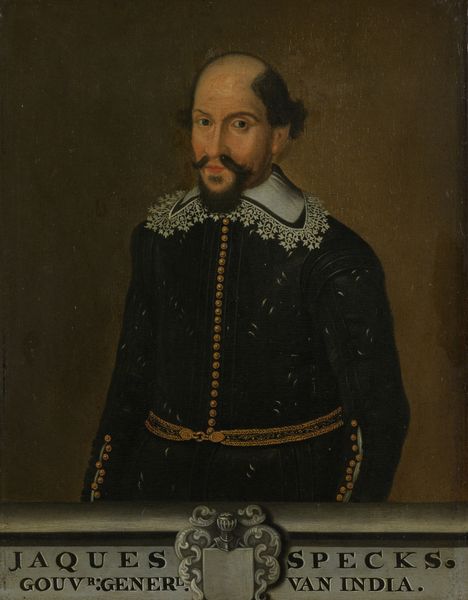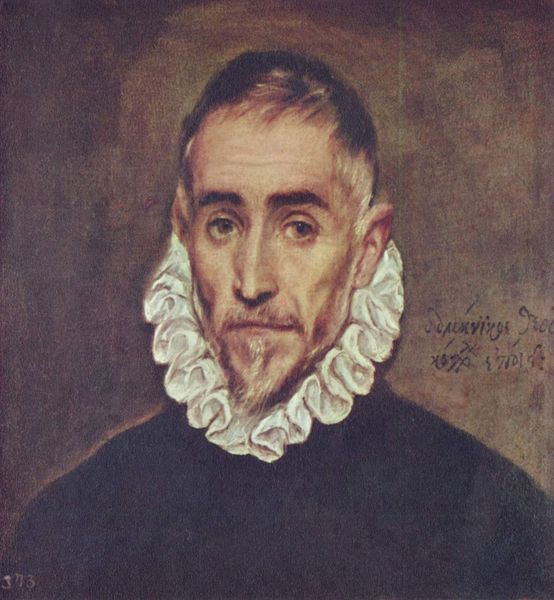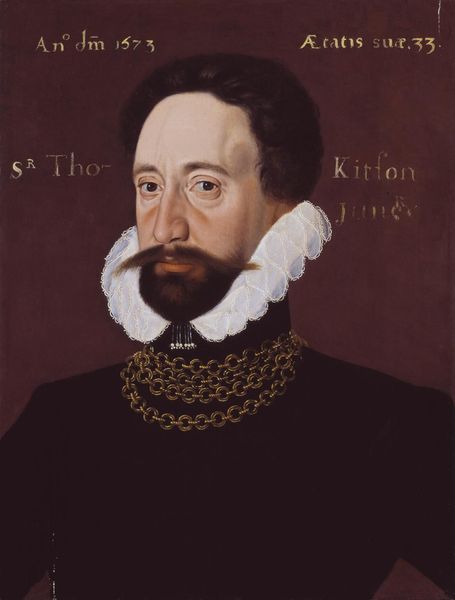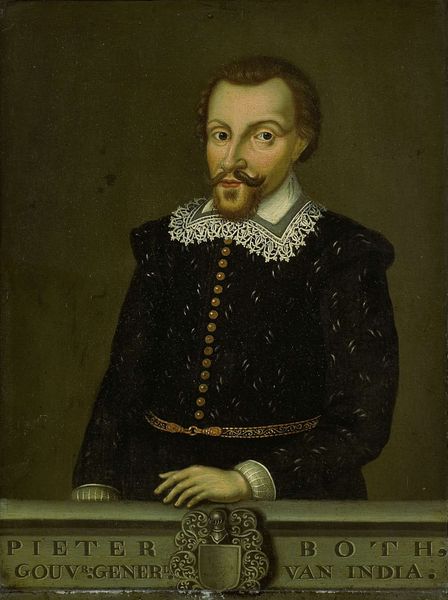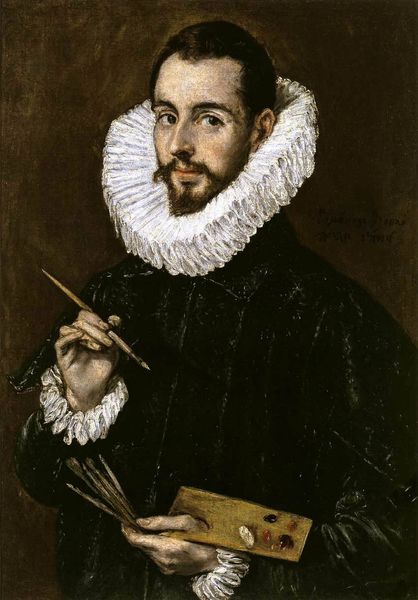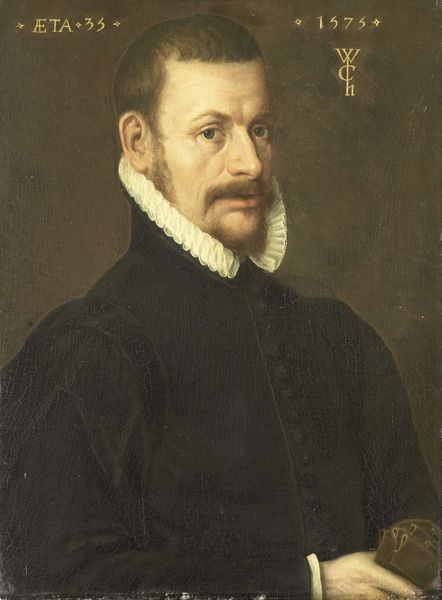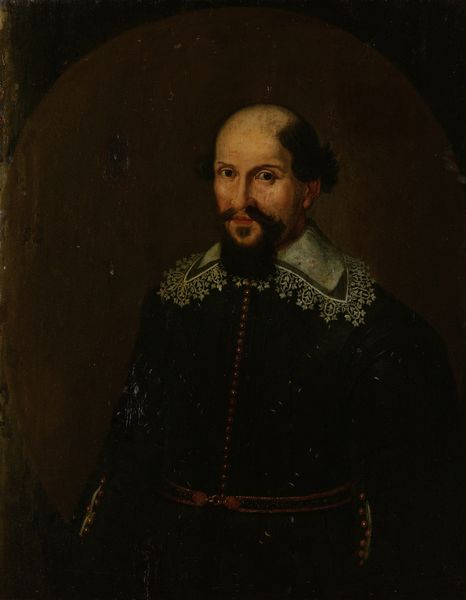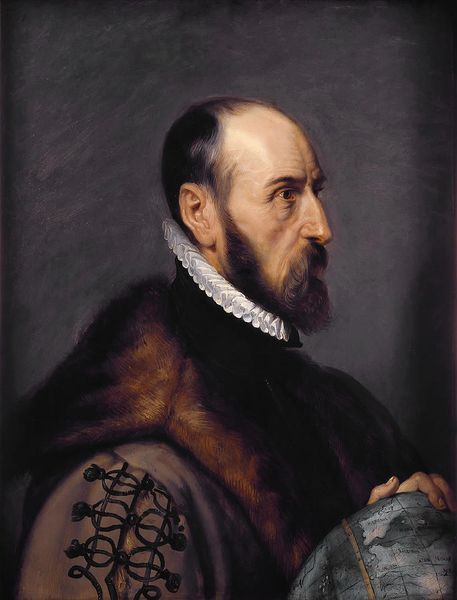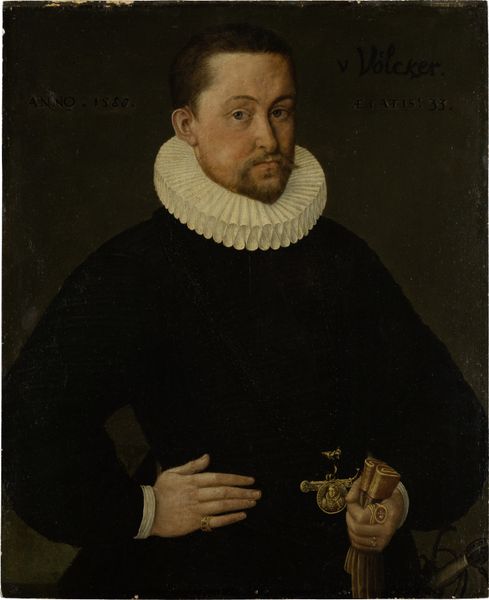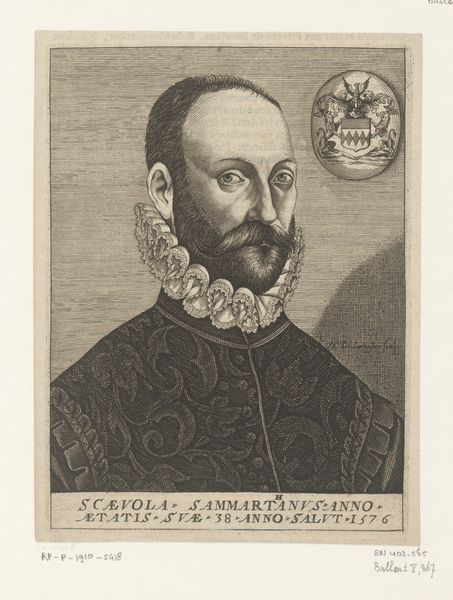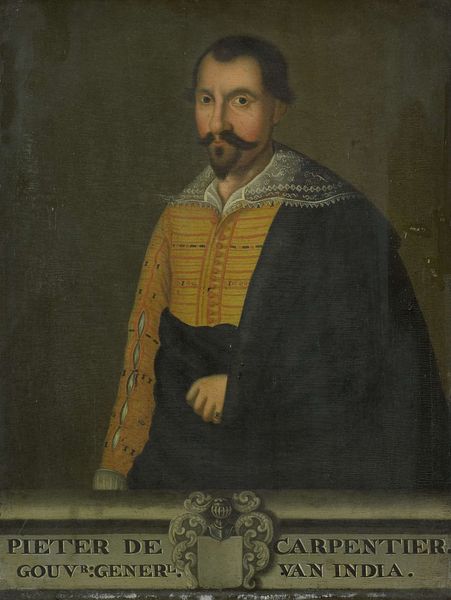
The Knight with his hand on his breast 1584
0:00
0:00
elgrecodomenikostheotokopoulos
Museo del Prado, Madrid, Spain
painting, oil-paint
#
portrait
#
painting
#
oil-paint
#
mannerism
#
history-painting
Dimensions: 81 x 66 cm
Copyright: Public domain
Curator: Standing before us is El Greco’s "The Knight with his hand on his breast," created around 1584. Painted in oil, this portrait emanates a profound sense of gravitas. Editor: Indeed. My initial reaction is one of stark simplicity—the severe darkness, relieved only by the bright, intricate lace and the glimmer of the gold hilt of the sword. What strikes you? Curator: I’m particularly interested in what is being represented, the code of honour—the man and his pose. The placement of the hand speaks of fidelity and perhaps the ideals to which this knight dedicated his life. Who were these people within the history? And what were they fighting for? Editor: While honour certainly resonates, I'm drawn to the materiality. El Greco's handling of oil paint is remarkable here. The velvety blacks and browns serve almost as a backdrop, allowing the light to fiercely hit certain points - those fabrics! It underscores the labour and material consumption required for this visual statement of power. Curator: Right. Look at the ways in which we might interpret gender within the class that’s portrayed. How does this code of honour uphold certain ideals? Can we see elements of the patriarchy in his posture? And in his garments? Editor: Good point. And even consider the materials themselves. Where were those luxurious fabrics produced? How did labour conditions enable access to such fine lace? The economics of image-making is inextricably linked to identity formation and class. Curator: And what impact did all this power and its aesthetics have on ordinary people? What message did this display of power convey to a society marked by inequalities? Editor: The production value alone makes it clear this was aimed at self-preservation for his position and status. Consider too the sword’s hilt – undoubtedly expensive to produce – but ultimately there to protect his position materially as much as spiritually! Curator: Reflecting on El Greco’s painting, it reminds us that even seemingly straightforward portraits hold layers of social meaning. Editor: I agree. Analysing it, from pigments to portraiture, it all reveals so much about that specific society and its construction of authority and its own eventual decline.
Comments
No comments
Be the first to comment and join the conversation on the ultimate creative platform.

